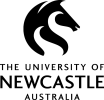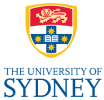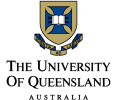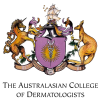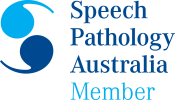If you have visited a speech pathologist before for either yourself or your child, they may have talked about the ‘traditional’ approach to ‘articulation therapy’ and you may have wondered what this actually means. There is no single definition for this approach as it often includes a number of techniques and what the term encompasses differs from clinician to clinician, however there are a few general principles that are commonly seen through this approach.
Procedures
The speech pathologist guides the individual through a series of carefully sequenced and graded steps, usually one sound at a time (e.g. the ‘s’ sound) and in one place at a time (e.g. at the start of a word such as ‘star’) . The procedure starts with sound training where the individual is required to recognise the sound and differentiate between the target sound and the error sound, and increases in complexity until finally, the phoneme is used in spontaneous conversational speech, and the emphasis moves to self-monitoring.
While the steps in-between sometimes vary, most versions of the traditional approach place discrimination of sounds produced by another individual as the first step, as seen in Berry and Eisenson (1956), Carrell (1968), Garrett (1973), Sloane and Macaulay (1968) and of course, Van Riper (1978), who wrote:
“The hallmark of traditional therapy lies in its sequence of activities for: (1) identifying the standard sound, (2) discriminating it from its error through scanning and comparing, (3) varying and correcting the various productions until it is produced correctly, and finally, (4) strengthening and stabilizing it in all contexts and speaking situations.” Van Riper, 1978 p. 179
Techniques
The techniques used to elicit a sound vary from verbal prompting which can include modelling of the sound or specific instruction on where to place the structures of the mouth all the way through to physical prompting which can include physical movement of the articulators into the correct position for sound production. Powers (1971) describes some of the procedures that have characterised traditional speech-language pathology assessment and intervention for functional speech disorders (articulation disorders). Powers states that the ‘stimulus methods’ developed and described by Travis (1931) remains at the core of most treatment methodologies used by speech-language pathologists to date.
Many resources for the traditional articulation therapy approach continue to be designed and published today and can easily be accessed on websites such as Dr Caroline Bowen’s www.speech-language-therapy.com.
Contact us for results focused on speech therapy
This article was written by our Speech Pathologist Ashleigh Fattah who is a Speech Pathology Australia member. If you have questions about language activities, make an appointment. We‘ll provide you with simple and effective therapy targeted to your concerns. Contact us today.
The post What is Articulation Therapy? appeared first on ENT Wellbeing Sydney.




